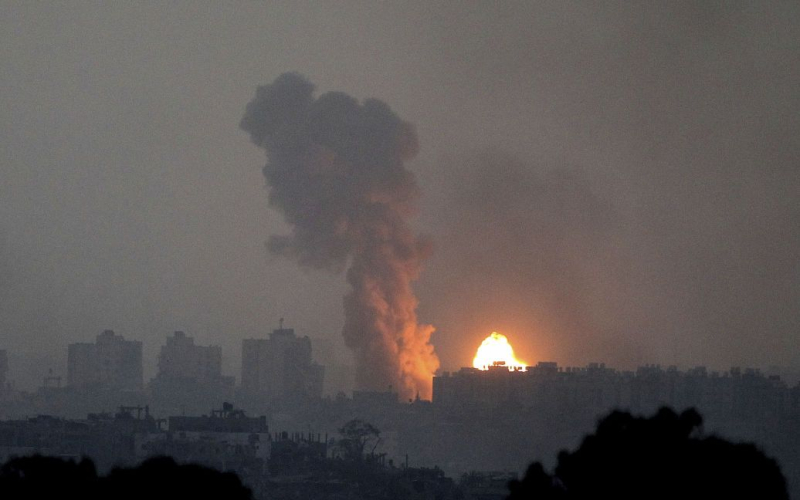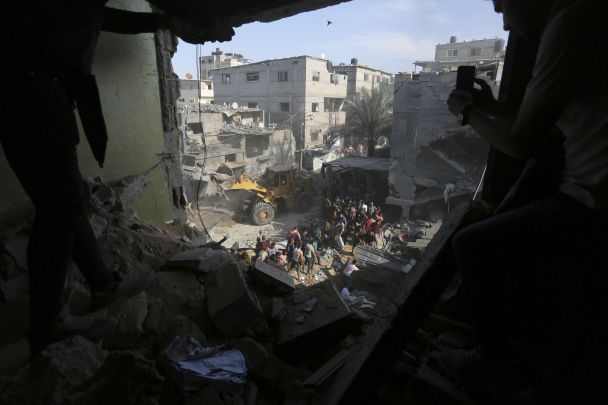
The militants have one very “unusual advantage” – a wide network of secret underground tunnels.
The network of tunnels built by Hamas will greatly complicate urban warfare during Israel's ground invasion of Gaza. The tunnels contain warehouses for weapons and other equipment, food, water, energy generators, and fuel.
The Independent writes about this.
The Israel Defense Forces, after several raids, began on the evening of Friday, October 27, a gradual ground operation in the Gaza Strip, starting from the northern areas. And the last thing the IDF is doing in this matter is to hurry, because this theater of operations, including Gaza City itself, is more than difficult.
The ground operation in Gaza is a response to the deadly Hamas attack on Israeli territory on October 7.
Hamas militants know much more about Gaza's landscape than their Israeli captors. They also have an arsenal of weapons, the extent of which Israeli soldiers do not know, including thousands of drones, the newspaper notes.

However, Hamas will operate secretly from a labyrinth of underground tunnels known as the Gaza Metro. They use them to store weapons to hold more than 200 hostages taken on October 7th. They will also use them as a staging area to carefully and slowly ambush Israeli soldiers making their way through the streets of Gaza.
But in the meantime, soldiers on the ground will be vulnerable to surprise attacks coming from underground Hamas militants. Now they have begun to enter some of these tunnels in hopes of preventing such attacks.
Finding Hamas tunnels is not easy
Initially, the mentioned underground tunnels were used to smuggle goods between the Gaza Strip and Egypt, and then between the Gaza Strip and Israel. Subsequently, due to increased Israeli surveillance of the Gaza Strip through drones and other electronic spy equipment, Hamas began using manpower and money to expand the tunnel network.
But it was only during the military operation in the Gaza Strip in 2014 that the Israeli army discovered the true dimensions of the tunnels built by Hamas. After this, the Israeli authorities began to erect barriers along the border with the Gaza Strip, which extended underground, to prevent militants from tunneling out to the Israeli side.
Given the length of the underground network beneath the Gaza Strip, this makes it the largest underground theater of war of all time. For before this, the largest tunnel system was created by the Viet Cong in the area west of Saigon – the Cu chi tunnels, which had a total length of 200 km, writes Timesofisrael.
To destroy them, the United States used carpet bombing using high-power bombs and filling entrances and ventilation shafts with water or tar. Special units were also created – “tunnel floors” – for cleaning. But all efforts were unsuccessful and 120 km of these underground structures still exist and have been partially converted by Vietnam into a memorial park with interactive attractions for tourists.
In 2017, the United States used the largest non-nuclear bomb in its arsenal, the GBU-43/B Massive Ordnance Air Blast (MOAB), weighing 9.8 tons, which was dropped from a C-130 Hercules transport, to strike a complex of caves in the Nangarhar province of Afghanistan. As a result, about 100 militants were destroyed, but there was no talk of the defeat of the entire network.
At the same time, under the Gaza Strip this network is 2.5 times larger than in Vietnam. And the IDF also understands that it cannot destroy this network remotely, so the blockade of the area must also stop the supply of fuel to the generators that are used to ventilate Hamas tunnels.
Overall, the situation is further complicated by the fact that it is underground where the hostages are being held. That is, we are talking not only about a combined arms, but a specific anti-terrorist operation in a confined space with ambushes, traps and mines.
Since 2014, the Israeli army (IDF) has been using special units to conduct military operations in tunnels. Its military personnel were trained in specially built tunnels in Israel, as well as through virtual reality. Soldiers are trained to use special sensors to determine what is happening in the tunnels. Robots and trained dogs are also used to gain access to them.
Hamas appears to have “refined the art” of tunnels and warfare in recent years, having learned much from Syrian rebels in Aleppo and jihadist militants from the Islamic State group in Mosul.
Everything will go wrong
The only certainty in the coming days and weeks is that neither Israeli nor Hamas military operations will go according to plan, ABC News notes.
No matter how sophisticated such a plan may be, the enemy “always has a say.” Things will go wrong, accidents will happen and innocent people will die.
“And as we have seen throughout history, once wars begin, hostilities often take on a life of their own. Actions at the tactical level can begin to influence strategy and policy. Any growing asymmetry in moral legitimacy between Israel and its adversary will be political and a strategic challenge for the Israeli government,” the journalists write.
Let us remind you:
Hamas attacked Israel on October 7, raiding civilian cities and towns along the border with the Gaza Strip. Then more than a thousand civilians died, the total number of victims is more than 1,400, and more than 200 people became hostages. For almost four weeks now, Hamas militants have been launching rocket attacks on Israel.
Israel responds by launching airstrikes against Hamas targets in the Gaza Strip. Their proximity to civilian objects makes it impossible to avoid civilian casualties. According to Hamas-controlled authorities, thousands of people in the Gaza Strip have been killed in Israeli strikes, but there is no independent confirmation of the group's figures.
Related topics:
More news

